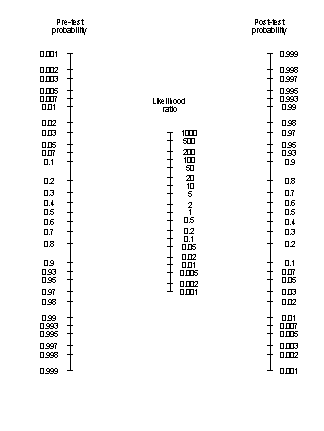 No, not an average afternoon at the Houses of Parliament, but another in our diagnostics series.
No, not an average afternoon at the Houses of Parliament, but another in our diagnostics series.
Moving yourself from looking at the predictive values of the tests as evaluated, to taking this information but using it in the situation you face, is a case of Bayesian mathematics.
Which sounds hard.
But its absolutely what you do. Take a serum potassium of 7.8 in a baby who you struggled +++ to get some blood out of, every drop taking minutes to leak from its squealing heel. You may re-test, but you’re unlikely to call ICU on hearing it.
What if that same value came back from the central line sample from a child on peritoneal dialysis who presented with vague abdominal pain?
There is a different ‘pre-test probability’ – expectation – associated with different clinical settings. The same result has a different ‘meaning’ – chance of being real – in different settings. However, sensitivity and specificity don’t change lots across different clinically relevant pre-test probability values. And this leads to the ability to use them to move from a known/estimated pre-test probability of disease, to a post-test value. This needs the use of the likelihood ratio (LR) and, most often, a nomogram.

(Fagins nomogram; from http://www.kardiolab.ch/ )
With a ruler, you go from your pre-test probability, through the LR in the centre, to read your post-test probability.
Likelihood ratios are calculated :
Likelihood of finding this result with disease / Likelihood of finding this result without disease
| Really diseased | Really not diseased | ||
| Test +ve | A | B | |
| Test -ve | C | D | |
So LR for Test+ is :
Likelihood of finding this result with disease [A/(A+C)] / Likelihood of finding this result without disease [B/(B+D)]
And LR for Test- is :
Likelihood of finding this result with disease [C/(A+C)] / Likelihood of finding this result without disease [D/(B+D)]
Now this also extends to multi-level tests:
| Really diseased | Really not diseased | ||
| [Rh] >100 | A | B | |
| [Rh]50-99 | C | D | |
| [Rh] <50 | E | F | |
The LR for serum rhubarb >100 is:
Likelihood of finding this result with disease [A/(A+C+E)] / Likelihood of finding this result without disease [B/(B+D+F)]
For [Rh] 50-99
Likelihood of finding this result with disease [C/(A+C+E)] / Likelihood of finding this result without disease [D/(B+D+F)]
Etc etc…
Armed with this, the ability to convert your diagnostic test numbers into something meaningful should become clinically clear.
- Archi